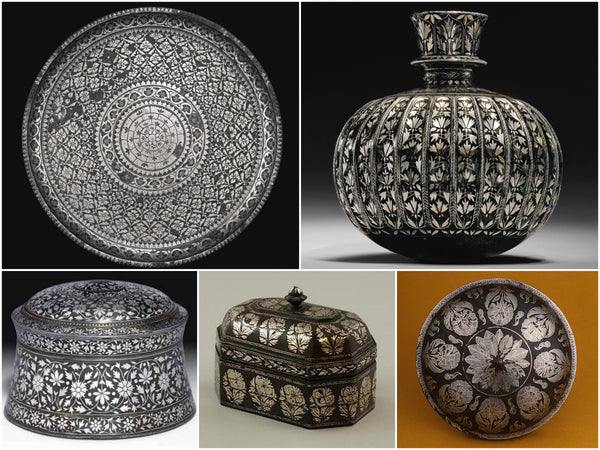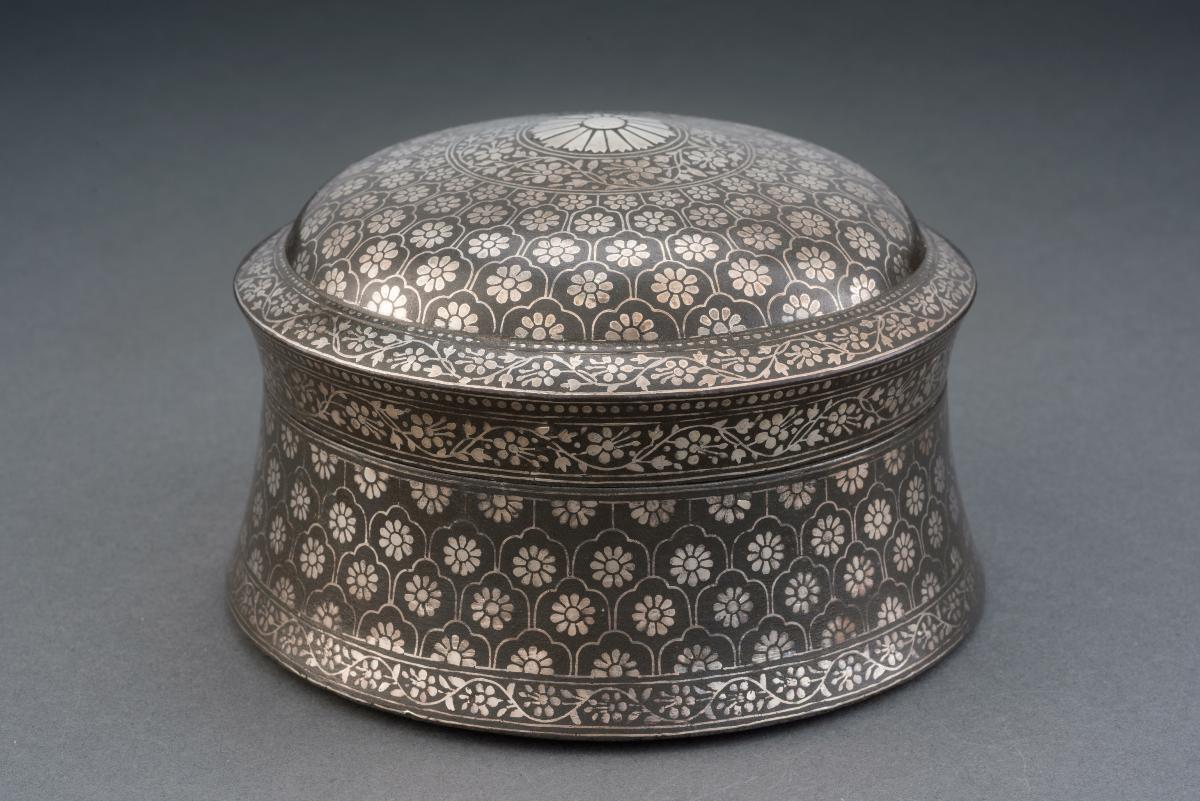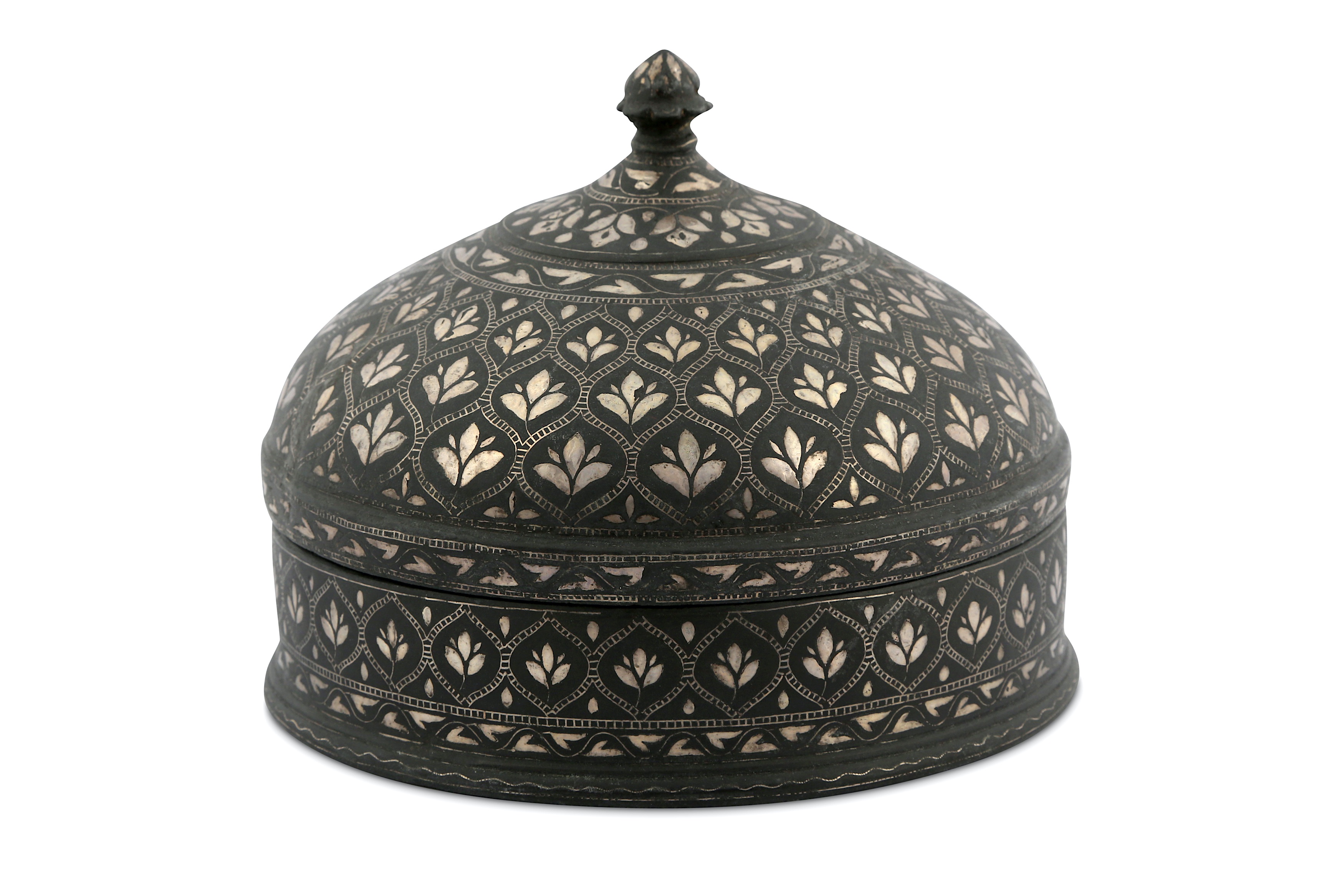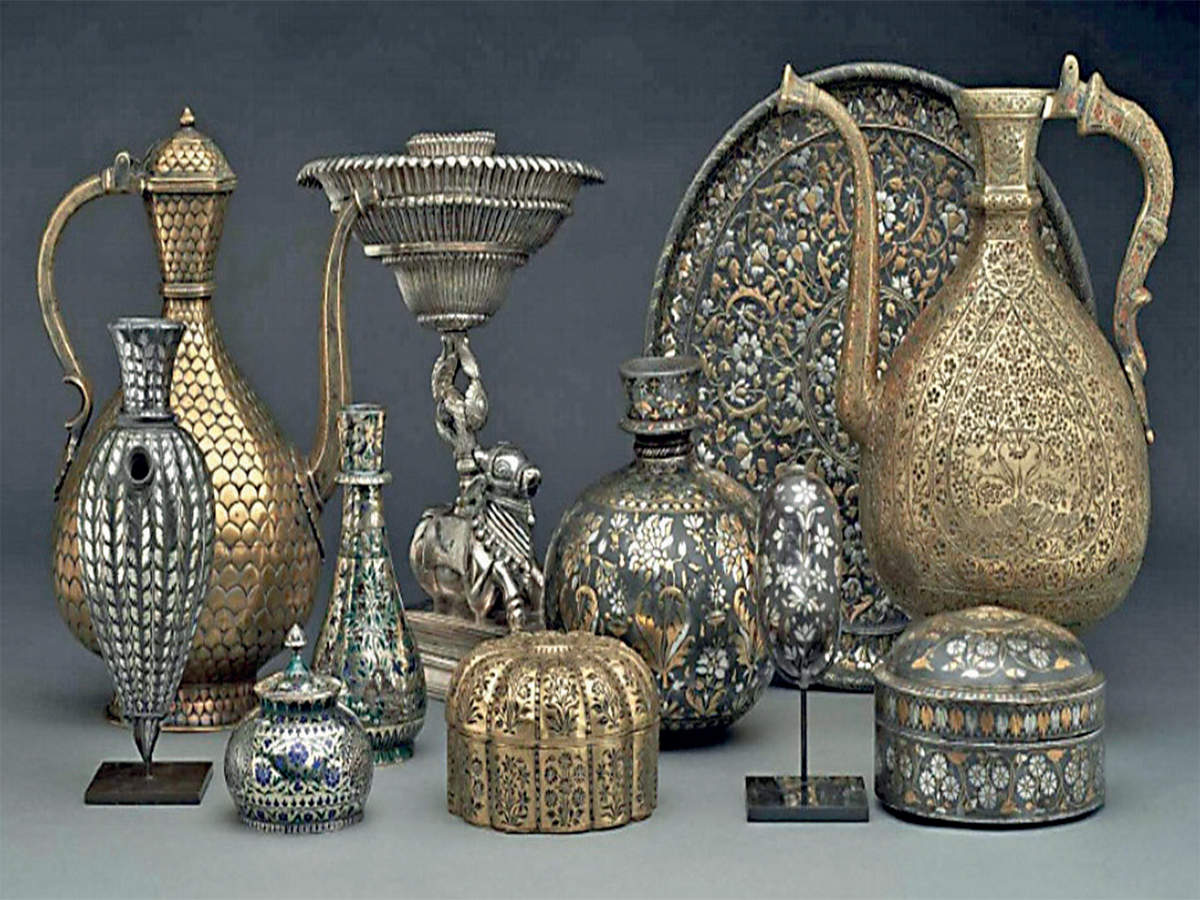ॐ श्री गणाधिपतये नमः
Source of all Images in this Blog-post : Google Images : ‘Google Image Search’ will reveal the multiple sources of every single image shared here. For more details, kindly see ‘Disclaimer‘
Bidriware is a metal handicraft from Bidar. It was developed in the 14th century C.E. during the rule of the Bahmani Sultans.
The term Bidriware originates from the township of Bidar, which is still the chief centre for the manufacture of the unique metalware.
Due to its striking inlay artwork, bidriware is an important export handicraft of India and is prized as a symbol of wealth.
The metal used is a blackened alloy of zinc and copper inlaid with thin sheets of pure silver. This native art form has obtained Geographical Indications (GI) registry.

Buy Bidri Art Online on Amazon India
Origin of Bidriware
The origin of Bidriware is usually attributed to the Bahamani Sultans who ruled Bidar in the 14th–15th centuries.
Bidriware techniques and style are influenced by Persian art. It was first brought to India by the noted Sufi Khwaja Moinuddin Hasan Chisti in the form of utensils.
The art form developed in the kingdom that was a mix of Turkish, Persian and Arabic influences which were intermingled with the local styles and thus a unique style of its own was born.
Abdullah bin Kaiser, a craftsman from Iran was invited by the Sultan Ahmed Shah Bahmani to work on decorating the royal palaces and courts.
Kaiser worked with local craftsmen and the partnership resulted in Bidriware under the rule of Ahmed Shah and his son Second Alauddin Bahmani.
Along with the local artisans, the art spread far and wide and was handed over to generations as time passed.

Buy Bidri Art Online on Amazon India
Bidri Artisans
There are craftsmen in this art practice who took this practice to national and international recognition.
According to the census of India in 1961, Syed Tassaduq Hussain was the first National awardee in 1969.
The other notable national awardees are Abdul Hakeem, Mohammed Najeeb Khan, Shah Majeed Quadri, Mohammed Moizuddin, Mohammed Abdul Rauf and Mohammed Saleemuddin.
Shah Rasheed Ahmed Quadri is a recipient of several awards including the National award.

Process of making Bidriware
Bidriware undergoes an eight-stage process: moulding, smoothening by file, designing by chisels, engraving by chisel and hammer, pure silver inlaying, smoothening again, buffing and finally oxidising by soil and ammonium chloride.
Bidriware is manufactured from an alloy of copper and zinc.The zinc content gives the alloy a deep black color. For details, please see Wikipedia page of Bidriware.

Soil speciality of Bidar
It is said that the soil of Bidar is very special. No one knows exactly what is special about it.
Some artisans feel that the soil is away from the sunlight and rain for years and therefore it has great oxidizing properties.
Others believe that the part of the fort from where soil is brought was a mine and therefore metal extracts in the soil make it unique.
The artisans say that the quality of the Bidri earth is very important and the real art lies in testing the mud which is necessary for making the articles.
It is tasted by the artisans by their tongues and then decided whether to use it or not. This knack comes from experience and is passed on to the next generation.
Another important thing is that all the process of making the Bidriware starting from casting to oxidation is done by hand and therefore it is time-consuming and hence costly too.

Bidriware in other places
While Bidar in Karnataka and Hyderabad in Telangana are the most vibrant centers of Bidriware, this art is also practiced in few other parts of the country.
In Aurangabad, the Bidri art was introduced by the Nizam of Hyderabad as it was a part of Nizam’s empire then. As Aurangabad has its own rich legacy of art and craft, the Bidri work mingled into the local arts soon.
Buy Bidri Art Online on Amazon India

